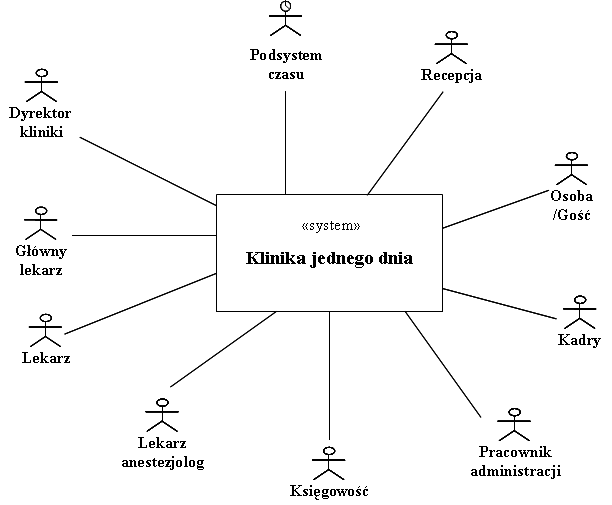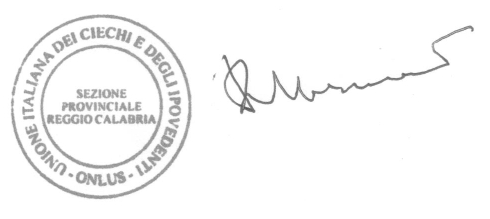2nd gas tariffs fg expert group meeting 4 may 2012 10:30 to 16:00; [creg premises – brussels] final minutes as approved on 30th of
2nd Gas Tariffs FG Expert Group Meeting
4 May 2012 10:30 to 16:00; [CREG premises – Brussels]
Final MINUTES as approved on 30th of May 2012; any substantial
comments to be annexed for publication
(Chatham house rules, no names basis in quotes)
Regulators,
European Commission
Tanja
Held
EC
Benoit
Esnault
CRE
Chair ACER TF
Tom
Maes
Belgium (CREG)
Chair ACER TF
Kerstin
Wernig
Austria (E-Control)
Chair ACER TF
Thomas
Querrioux
ACER
Jan-Peter
Sasse
Germany (BNetzA)
Richard
Miller
United Kingdom (Ofgem)
Edward
Droste
Netherlands (NMa)
Kirsten
Bouwens
Netherlands (NMa)
Experts
Geoffroy
ANGER
GRTgaz
Alex
BARNES
Gazprom Marketing & Trading
Laurent
DE WOLF
Fluxys
Ivan
GHIOSSO
EDF
Debra
HAWKIN
National Grid
Dirk Jan
MEUZELAAR
VEMW, IFIEC
Agatha
PEPTEA
E.ON Energie Romania
Konstantin
PETROV
KEMA
Ralf
PRESSE
RWE
Jorge
ROMAGOSA
Gas Natural Fenosa
Observers/Academic Expert(s)
Johannes
Heidelberger
ENTSO-G
Ann-Marie
Colbert
ENTSO-G
Sergio
Ascari
FSR; Academic expert
NB: in addition to the minutes 8 slide-packs were submitted, of which
only Ascari and Petrov agreed to publication. Other slides are for
internal use by ACER only. The minutes are structured to logically
reflect discussion, not the exact timed order of the meeting.
General remarks.
During the meeting it was discussed that:
*
It is key to capture trade-offs
*
One must check if tariffs are sufficient to get allowed revenue
*
The role of tariffs in incentivizing the use of capacity (think of
CMP-measures)
1.
Problem Identification paper
The general feedback is overall positive. Four themes for enhancement
were discussed:
*
The promotion of short term versus long term products;
*
The differentiation between congested and non-congested
situations;
*
Revenue related issues
*
Transparency
a.
Short term versus Long term
Discussion
The text assumes that producing countries would favor a short term,
cost based approach to tarification. However, in practice, even in
producing countries, long term involvement is promoted to avoid
stranded assets.
The key issue here is to assure that TSOs get revenues, and that (e.g.
tariff) signals ensure a cost-effective use of the system. It means,
for the short term, one needs to assess network operation in relation
to congestion management. For the long term, it means to facilitate
new investments.
Specific remarks on the text
*
On section 2.2: reference to the tariff-related provisions in
balancing should be considered to be included;
*
On section 2.3: the concepts behind dynamic and static
efficiency should be considered to be made explicit;
*
1 of the co-chairs’ answer: these concepts might be too
theoretical. They could be removed from the paper.
*
On section 4.0: it is unclear why producing countries could
prefer the short term approach;
*
1of the co-chairs’ answer: in a producing country security
of supply is less at stake.
b.
Congestion versus non congestion
Discussion
More than a distinction between producing and consuming countries as
the reason for certain approach to tariffs, it is suggested that
scarcity is the relevant driver. Thus, problem identification should
develop on congested versus non congested situations
The distinction between the two situations has been made in CMP. When
UIOLI is put into action, there is a first signal. Then ACER
monitoring report reveals longer term congestions, over 3 years.
However, this distinction has its limits: it is noted that auctions
reveal congestion, but can’t trigger investment. The CMP approach
doesn’t fully take into account the lead time of the necessary
investments to solve an identified congestion.
On the other side, it was argued that distinguishing between the two
situations (“congested” and “uncongested” IPs) would add unnecessary
complexity (considering also the positive effects of Security of
Supply requirements on congestion situation). The congestion
situations could become less common in Europe (thanks to N-1 rule),
except some IP-bottlenecks hampering intraday transfers of
flexibility.
c.
Revenue
Discussion
The problem is as follows:
*
Will under and over recoveries remain a national issue or become a
cross-border issue?
*
Should the revenue be secured ex ante or should ex post resolution
be allowed?
The facilitation of investment, including upstream and downstream
investments, is to be considered. It is a matter of balance: large and
unpredictable fluctuations should be avoided (example: Statoil – UK
issues). Commodity charge can cause such instability. The tariffs
should be reasonably stable and clear to allow investments by upstream
(producers) and downstream (industrial consumers) (2 experts).
On a purpose of stability, one expert acknowledges that an ex-post
mechanism (regulatory account or commodity charge) is necessary to
guaranty the cost recovery of the TSO, but states that this ex-post
mechanism should only take into account unpredictable variations.
One expert states that tariff has to create a relevant economic signal
for domestic transmission and for transit. 1 Observer raises the
problem of a country with an important amount of transit which
decreases. In this case, should the domestic consumer offset the
shortfall?
One expert stresses that some domestic users are condemned to their
capacity. It is a fact that End-consumers cannot choose the TSO, but
upstream competition could lower the end price of End-consumers.
The issue of cost-recovery can be conflicting with non-discrimination.
Importance of a trade-off between LRMC and actual/average price is
identified. It seems that LRMC would in any case need to take into
account cost-recovery.
Given that capacity costs as opposed to variable /operational costs
are driven by location, a locational capacity charge is more ‘cost
reflective’. Therefore any methodology should allow for locational
signals.
Specific remarks on the text
*
On section 2.3, second paragraph : “due to the intrinsic
uncertainty on short term auction revenues” – when capacity is
plentiful, there is no uncertainty;
*
Same sentence: the full transportation charge should be taken
into account and not only the commodity charge;
*
4.2: use of “additional capacity” with a different meaning than
in CAM and CMP;
*
General remark: most of the notions that are discussed are based
on a revenue cap. How can these notions apply to price-cap
regimes?
d.
Transparency
Discussion
Transparency in tariff (not simplicity) is fundamental for the
promotion of investments. Policy options that are clear and
transparent (not necessarily simple) will enable decision making by
stakeholders which should drive down total costs. It should allow
system users to understand how and why tariffs are changing, when they
are changing. It should allow them to make their own predictions.
It is underlined by 3 experts that harmonisation will create a
transition state in regulation that will cause an increase in
uncertainty. Hence, transparency is all the more fundamental.
Specific remarks on the text
*
Creation of a section 4.5 focusing on transparency and
stability.
2.
Questions on Tariff (homework)
*
4 presentations were made explicitly, rest was discussed.
*
Presentations focused on economic fundamentals; tariff context;
example of Romanian-Hungarian issues. Some remark:
*
Tariffs can be set to recover costs that range between
incremental-based and stand-alone based value; regarding
short-term versus long-term pricing: there might not be a solution
to price differentiation of the two products. A suggested approach
could be to monitor the level of revenue recovery based on (longer
terms, earlier booked) capacity reservation: if a certain
threshold is achieved (e.g. 90% of required revenue) shorter term
capacity purchases could be based on auctions with a reduced
reserve price (e.g. the short term marginal cost only).
*
Discussion – 1 expert notes that Tariff actions at domestic level
can create distortions between domestic points and nearby
Interconnection Points. However, as two distinct envelopes
(National and Cross-border IPs) are predefined, it shouldn’t be an
issue. The question is how to make sure that the envelopes are of
the right size. Another remark is that as well as deciding on the
proper balance between short term and long term, there is a need
for a mechanism to cover variable costs.
*
Romanian case study
*
a less liquid market
*
one interconnector, with Hungary;
*
accounts for less than 10% of the consumption of the country.
*
Problems with products compatibility (LT on Hungary side, ST on
Romanian side)
*
In central Europe, where tariffs are part of a regulated global
tariff, the first concern is to keep x-border tariffs low
*
Belgian case study
*
ST versus LT pricing differentiation: need for harmonisation, as
TSOs will have to align their practices. If not, cheaper, over
recovering routes will be subsidized by under recovering ones
(see example);
*
Multipliers: unlike foreseen in KEMA 2009 study, Fluxys monthly
multipliers vary in a small range, from 0.5 to 2.6.
*
General discussion on the questions
*
On Cost allocation
Cost allocation & determination of reference prices are the same
issue. Various cost allocation methodologies of e.g. short term versus
long term products costs can trigger in some cases inter-TSO cross
subsidization; various E/E splits will distort inter-Hub competition.
Regarding the cost drivers (for the cost allocation):
*
LRMC is just a cost driver. As it needs to be adjusted for
cost-recovery, it cannot constitute a pure approach in any way.
*
The transmission systems are designed so that there is no
physical congestion; contractual congestions come from system
users not using the capacity they booked.
2 experts underline that they have no experience of an issue resulting
from the coexistence of 2 different tariff approaches.
*
On cross-subsidies
*
General discussion on how cross-subsidies should be tackled in
the Framework Guideline: should it not be tackled? Should it be
tackled only via high level principles, and leave it for the
NRAs and ACER to monitor? At this stage, this question remains
open.
*
Domestic versus Transmission: define 2 macroscopic envelopes or
go closer to “cost-service” equivalence? In case the first
approach is favored, how to ensure that the envelopes are of the
correct size? One issue, which influences the size of national
envelops, is the definition of a distribution network.
*
LT versus ST – it is considered by many experts that the shift
to the shorter term is today an important issue. However, it is
not possible to predict that it will remain so. In any case, if
one TSO goes for short term under recovery, other TSOs will have
to do the same.
*
On multipliers it was discussed that multipliers equal to 1 or
different from 1 will trigger cross-subsidies between LT & ST
products.
*
On Cost Recovery
*
How do we cover variable costs? – developing ST markets goes
along with increasing variable costs that need to be covered.
*
Price instability will affect supply, consumers and buyers.
*
On incentives to use the system efficiently
*
2 experts underline that in electricity, tariff used to follow a
“pay as used” approach; however, now, everyone thinks that
transmission capacity should have a value (because of i.e. large
needs to invest in cross-border power transmission).
*
On the Cost of Implementing the FG:
*
Situations when shippers have to renegotiate LT contracts are
costly;
*
Apart from LRMC, which might trigger consequent implementation
costs, all other options would have limited costs;
*
One identified cost is the revenue loss when merging zones.
*
The actual costs may depend on whether a dedicated platform was
developed specifically for cross-border use.
*
Policy options that minimise the need for future change will
drive down the costs.
6/6
 DOCENCIA EN SINCRONIZACIÓN DE PROCESOS CON JBACI Y TUTORIZACIÓN
DOCENCIA EN SINCRONIZACIÓN DE PROCESOS CON JBACI Y TUTORIZACIÓN THE INTERNATIONAL COUNCIL FOR THE EXPLORATION OF THE SEA
THE INTERNATIONAL COUNCIL FOR THE EXPLORATION OF THE SEA ROZWIĄZANIA DO SPRAWDZIAN 1 14032011 – 20032011 POLECENIA 1
ROZWIĄZANIA DO SPRAWDZIAN 1 14032011 – 20032011 POLECENIA 1 2 KOLO PRIJÍMANIA NA BAKALÁRSKY ŠTUDIJNÝ PROGRAM PRIESTOROVÉ PLÁNOVANIE
2 KOLO PRIJÍMANIA NA BAKALÁRSKY ŠTUDIJNÝ PROGRAM PRIESTOROVÉ PLÁNOVANIE RELAZIONE MORALE DEL CONSIGLIO DIRETTIVO DI REGGIO CALABRIA DELL’UNIONE
RELAZIONE MORALE DEL CONSIGLIO DIRETTIVO DI REGGIO CALABRIA DELL’UNIONE 35 CHAPTER III RESEARCH METHODOLOGY A RESEARCH DESIGN BEFORE
35 CHAPTER III RESEARCH METHODOLOGY A RESEARCH DESIGN BEFORE